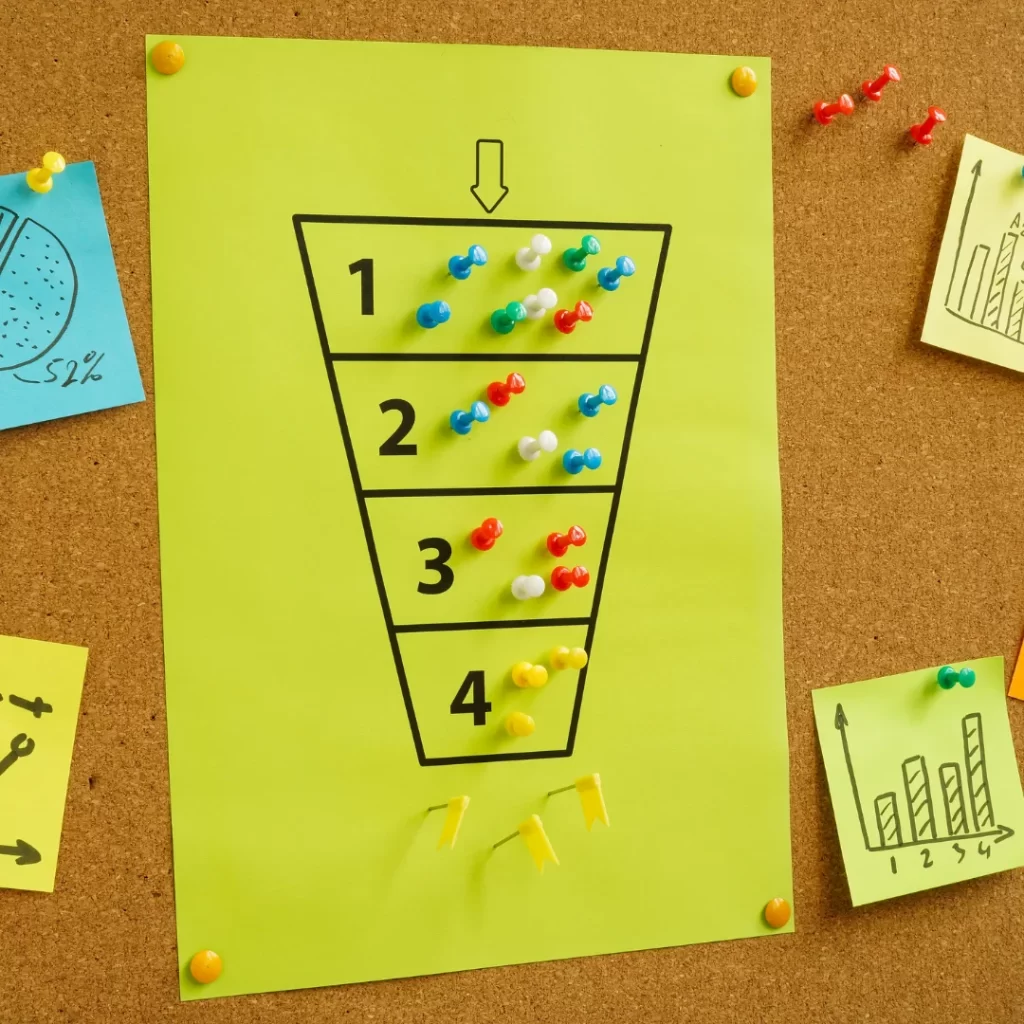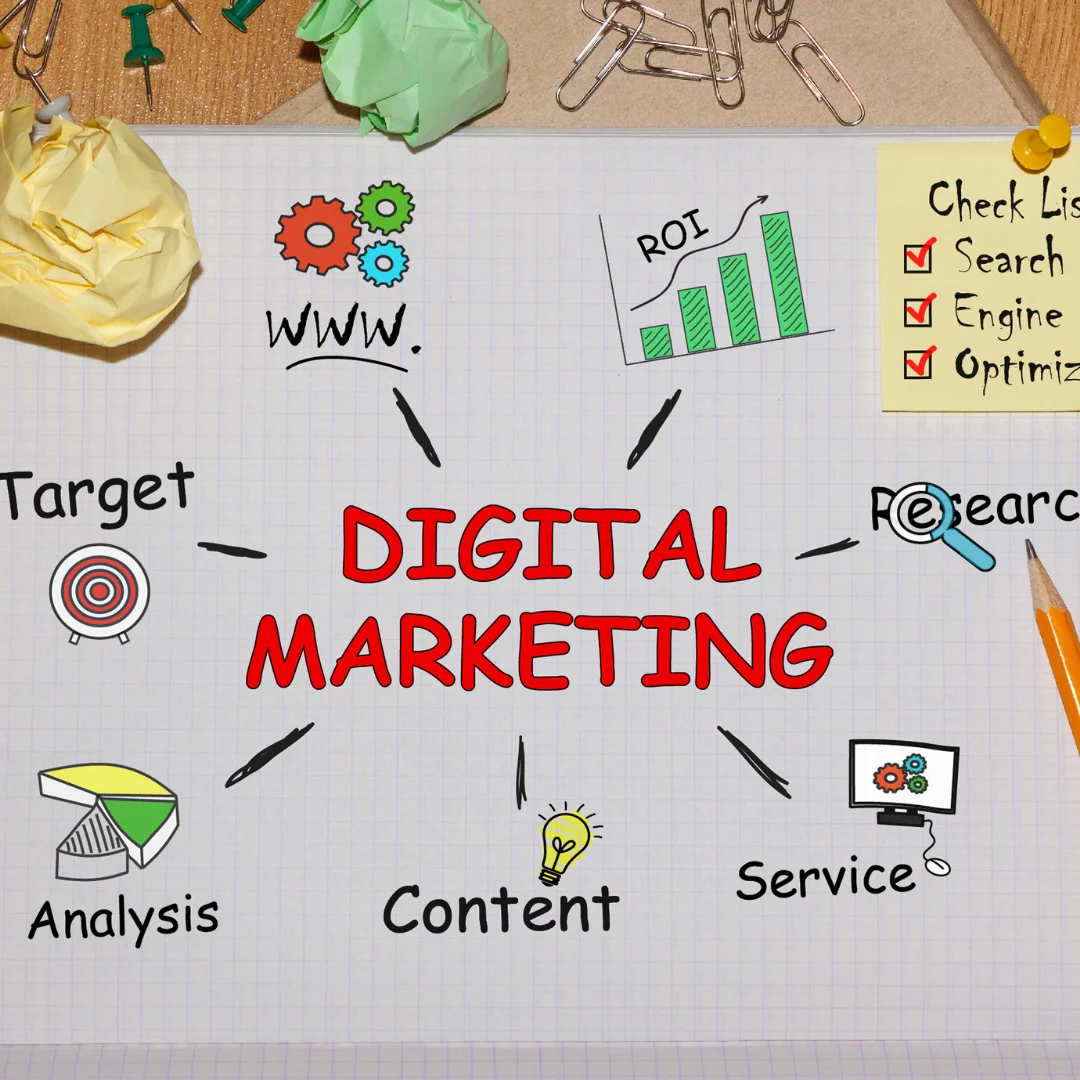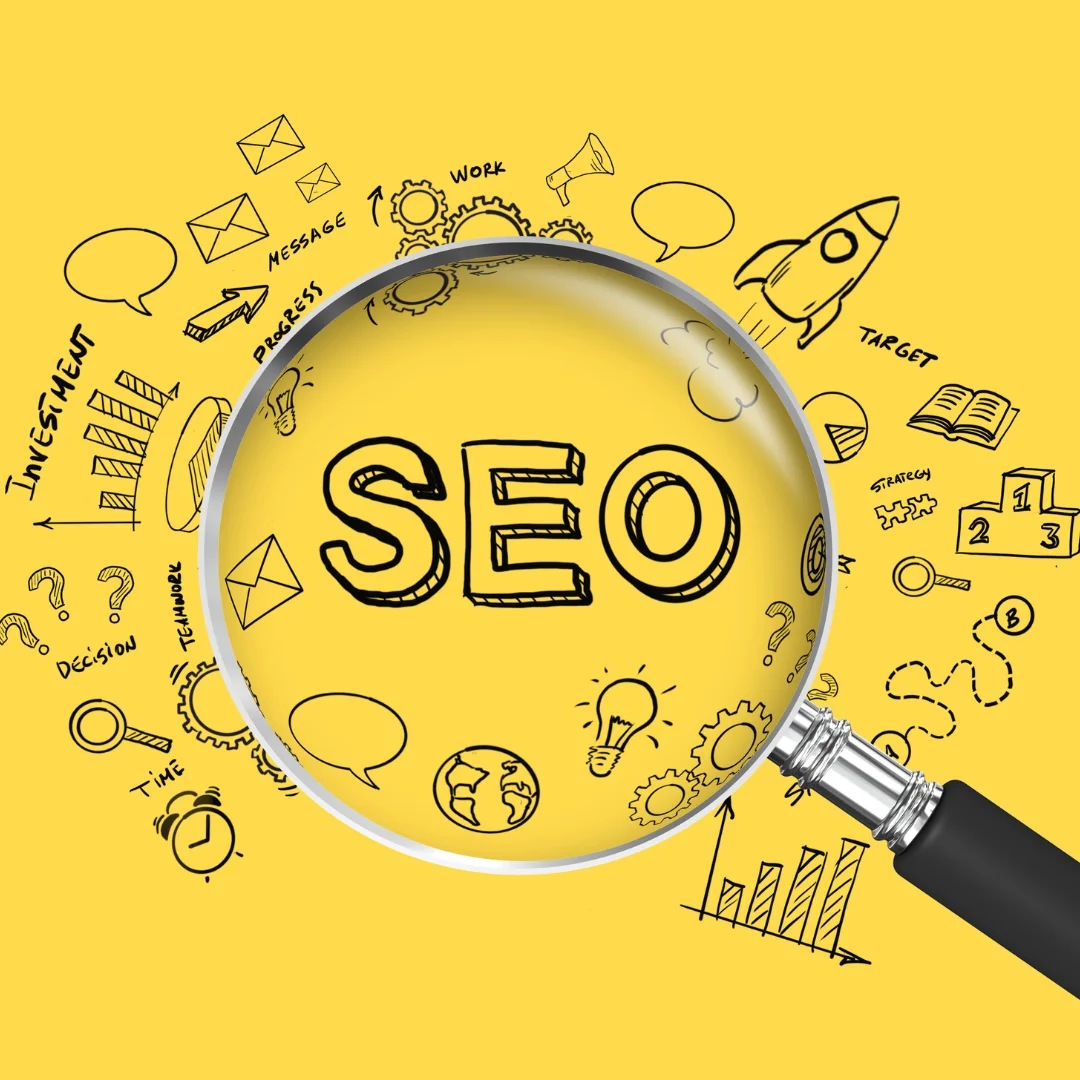Understanding the marketing funnel is like mastering the art of persuasion, but with fewer awkward handshakes and more data-driven strategies. This comprehensive guide dives deep into the stages, strategies, and secrets behind a well-oiled marketing funnel—complete with a real-life case study that will inspire even the most skeptical marketer. Spoiler alert: it’s not about chasing leads but guiding them gently, like a slightly pushy yet charismatic friend.
The marketing funnel isn’t just a buzzword; it’s the backbone of any successful marketing strategy. Picture it as a roadmap guiding your customers from “Hmm, what’s this?” to “Take my money already!” It’s rooted in the AIDA model—Awareness, Interest, Desire, and Action—providing a structured way to understand your audience’s journey.
Why should you care? Because knowing how your customers think, feel, and act at each stage of their journey allows you to craft strategies that work. Let’s face it, winging it doesn’t cut it anymore.
Understanding the Marketing Funnel

Let’s start with a reality check: the marketing funnel is not a magical, one-size-fits-all contraption where you toss in a bunch of potential customers, sprinkle some ad spend, and voilà, sales rain down. If only marketing were that easy, we’d all be sipping cocktails on a beach. Instead, the marketing funnel is a customizable blueprint that helps businesses guide prospects from mere curiosity to a full-blown brand obsession—sometimes even advocacy.
Types of Marketing Funnels
The beauty of a marketing funnel lies in its adaptability. Businesses across industries use various funnels tailored to their unique goals, including:
| Type of Funnel | Purpose | Common Tactics Used |
|---|---|---|
| Lead Generation Funnel | Capture potential customer information | Gated content, free resources, webinars |
| Sales Funnel | Convert interested prospects into paying customers | Product demos, special offers, follow-up emails |
| Engagement Funnel | Build stronger relationships with existing customers | Loyalty programs, personalized communication |
| Retention Funnel | Keep customers coming back for more | Exclusive deals, subscription renewals |
Each funnel serves a different stage of the customer journey, and selecting the right one is akin to choosing the right weapon in a video game—you wouldn’t use a water pistol in a boss battle, would you?
The Full-Funnel Marketing Strategy
Now, let’s tackle the concept of full-funnel marketing—the Swiss Army knife of marketing strategies. Instead of focusing all your efforts on one stage of the funnel (hello, wasted budget!), a full-funnel approach ensures you’re covering all your bases. This means addressing the unique needs of your audience at every step, from those who’ve never heard of your brand to loyal customers who are already considering tattooing your logo on their forearm.
Here’s why this matters:
- Awareness (Top of Funnel): If people don’t know you exist, your product could be as good as free pizza, and no one would care. This is where you focus on grabbing attention through ads, blog posts, and social media magic.
- Engagement (Middle of Funnel): Once you’ve piqued their interest, you need to nurture those leads with educational content, webinars, or even a well-placed joke in your email campaign.
- Conversion (Bottom of Funnel): Here’s where the money is made. Discounts, free trials, and impeccable timing can turn that “maybe” into a resounding “YES!”
- Retention (Post-Purchase): Want to turn one-time buyers into repeat customers? Think loyalty programs, stellar customer service, and the occasional handwritten thank-you note (yes, really).
Why Alignment is Everything
A marketing funnel without alignment is like a band playing entirely out of sync—confusing, annoying, and destined for disaster. The key to success lies in aligning your strategies with customer touchpoints at each stage of the funnel.
Imagine this scenario:
You’re using flashy ads to grab attention (Top of Funnel), but your landing page feels like a leftover PowerPoint slide. By the time prospects reach the checkout page (Bottom of Funnel), they’re running for the hills. Alignment ensures your messaging, visuals, and offers flow seamlessly from one stage to the next, creating an experience as smooth as your favorite barista’s latte foam.
Why Businesses Need a Full-Funnel Strategy
Let’s hear it straight from the experts:
“A full-funnel strategy is like building a relationship. You don’t propose on the first date—you earn trust over time.”
– Sarah Collins, Digital Marketing Strategist
A full-funnel approach ensures your marketing isn’t just reactive but proactive. By anticipating customer needs at every step, you’re not only increasing conversions but also building brand loyalty that pays dividends over time.
The Cost of Ignoring the Funnel
Here’s a sobering thought: failing to optimize your marketing funnel is akin to leaving money on the table. Sure, you might snag a few impulsive buyers, but without a strategic approach, you’re likely losing out on countless others who slip through the cracks.
Think of it this way: Would you spend all your energy perfecting the front door of your house if the roof is leaking and the back door is wide open? Of course not. A successful marketing funnel requires attention to every part, ensuring nothing falls apart when the pressure is on.
Wrapping It Up
So, whether you’re running a small business or steering a multinational enterprise, a solid understanding of the marketing funnel can transform your results. The journey from awareness to loyalty is rarely linear, but with the right strategies, you can guide your customers like a trusted GPS—even if there are a few U-turns along the way.
The 4 Stages of the Marketing Funnel
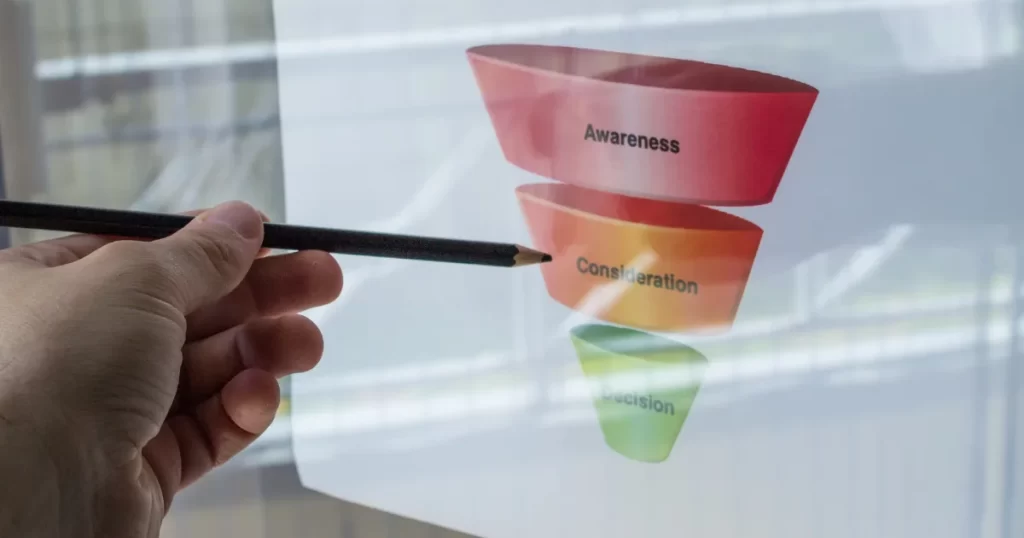
Understanding the nuances of the marketing funnel is critical for transforming passive prospects into raving advocates. These four stages aren’t just theoretical milestones—they’re the backbone of any effective marketing strategy. Let’s break them down and add a dash of humor to keep things engaging.
1. Top of Funnel (ToFu): Creating Awareness
This is where the magic begins. The top of the funnel is all about introducing your brand to people who don’t even know they need you yet. Think of it as your “meet-cute” moment—your goal is to make them pause mid-scroll and whisper, “Tell me more.”
Strategies for Success
- Content Marketing
Your blog posts, infographics, and videos should be irresistible. Think of them as digital bait—not the spammy kind, but the kind so good it gets shared in group chats. Pro tip: If your content isn’t good enough to spark an argument in the comments, it’s not working hard enough. - SEO
Nobody ventures past the first page of Google unless they’re desperate. Optimize your content like your life depends on it. Keywords, backlinks, and meta descriptions are your bread and butter—don’t skimp. - Social Media Advertising
Show up on your audience’s turf. Whether it’s TikTok dances or LinkedIn polls, adapt your content to the platform. And yes, you may need to learn Gen Z slang—it’s a rite of passage.
Metrics to Track
| Metric | Why It Matters |
|---|---|
| Impressions | Shows how many people are seeing your content—visibility is step one. |
| Click-Through Rates | Indicates whether your content is piquing curiosity or just blending into the void. |
| Website Traffic | Tracks how many people are compelled to explore further after seeing your content. |
2. Middle of Funnel (MoFu): Driving Engagement
Congratulations, they noticed you! Now comes the tricky part—keeping their attention. The MoFu stage is where you woo your prospects, offering value and proving that you’re not just another faceless brand hawking mediocre products.
Strategies for Success
- Webinars
Showcase your expertise. Think of webinars as a first date: come prepared, bring value, and don’t talk about yourself the entire time. - Case Studies
Prospects love a good success story. Show them how you’ve saved the day for others and subtly hint that they could be next. - Personalized Emails
“Hey [Name], we thought you’d like this!” sounds a lot better than generic spam. Make your emails personal enough that they can’t hit “delete” without a second thought.
Metrics to Track
| Metric | Why It Matters |
|---|---|
| Email Open Rates | A sign of how compelling your subject lines are—and if your emails are even worth opening. |
| Time Spent on Page | Indicates whether your content is engaging or if people are bouncing faster than a rubber ball. |
3. Bottom of Funnel (BoFu): Sealing the Deal
Here’s where the rubber meets the road—or in marketing terms, where the prospect decides whether to open their wallet or ghost you forever. No pressure.
Strategies for Success
- Social Proof
Customer reviews and testimonials are your secret weapon. A glowing review can close the deal faster than the best-written copy. - Incentives
Discounts, limited-time offers, or exclusive perks can push prospects over the edge. Who doesn’t love a good deal? - Retargeting Ads
They browsed your website, added an item to their cart, and left. Retargeting is your chance to say, “Hey, remember us? You liked us for a reason.”
Metrics to Track
| Metric | Why It Matters |
|---|---|
| Conversion Rates | Tells you how well you’re turning interest into action. |
| Cost Per Acquisition | Measures how much you’re spending to close each deal—because profit matters. |
4. Post-Purchase Stage: Building Loyalty
The sale is not the end of the journey—it’s the beginning of a beautiful relationship. Post-purchase efforts turn one-time buyers into repeat customers and loyal advocates.
Strategies for Success
- Loyalty Programs
Make your customers feel like VIPs with exclusive rewards and perks. Starbucks didn’t build an empire on overpriced lattes alone—they had points to back it up. - Feedback Loops
Show your customers you care by listening to their opinions. Nothing says “We value you” like actually acting on their feedback. - Customer Support
Be there for your customers. Answer their questions, solve their problems, and they’ll sing your praises far and wide.
Metrics to Track
| Metric | Why It Matters |
|---|---|
| Repeat Purchase Rate | A strong indicator of customer satisfaction and loyalty. |
| Net Promoter Score (NPS) | Reveals how likely customers are to recommend you to others—a.k.a. free marketing. |
“Customer loyalty isn’t a bonus; it’s the endgame.”
– Emily White, Customer Retention Expert
Analyzing Marketing Funnel Metrics for Success

What’s the point of a Marketing Funnel if you’re not measuring its effectiveness? That’s like setting up a lemonade stand in the desert and wondering why nobody’s buying. Data is your compass, and these metrics tell you whether your funnel is a goldmine or a sieve. From Google Analytics to SEMrush, the right tools let you track your performance and fine-tune each stage for optimal results. Here’s a detailed breakdown of metrics that matter and how to track them like a pro.
Top of Funnel (ToFu): Awareness Metrics
At the top of the funnel, it’s all about getting eyeballs on your brand. Impressions, clicks, and traffic—this is where you measure curiosity. Your content might as well be a meme: if it doesn’t spread, it’s dead.
Key Metrics:
- Impressions:
This shows how often your content pops up on screens. Think of impressions as the “Hello!” of digital marketing. If nobody sees your ad, the rest of your funnel doesn’t stand a chance.- Why It Matters: High impressions indicate your SEO and social media strategies are doing their job. Low impressions? Time to revisit those keywords or rethink your ad targeting.
- Tracking Tool: Google Analytics. The “Acquisition” report will be your new best friend here.
- Click-Through Rate (CTR):
So, they saw your content. But did they care enough to click? CTR is the percentage of people who clicked on your ad, post, or email link after seeing it.- Why It Matters: A low CTR might mean your call-to-action (CTA) isn’t spicy enough or your headline isn’t clicking with your audience. Fix it.
- Tracking Tool: SEMrush or Google Ads. Both provide detailed CTR breakdowns.
- Website Traffic:
Once they’ve clicked, did they actually land on your site? Or did the page load slower than a sloth on a treadmill?- Why It Matters: A spike in traffic is great, but make sure it aligns with your goals. Random traffic from bots isn’t going to convert.
- Tracking Tool: Google Analytics. Look under “Behavior” to see where visitors are landing and how they’re navigating.
Middle of Funnel (MoFu): Engagement Metrics
Welcome to the middle of the funnel, where prospects decide if they’re into you or just window-shopping. This stage is all about keeping them engaged and intrigued.
Key Metrics:
- Email Open Rates:
Are your emails getting opened, or are they lounging in the spam folder with discount coupons and “Urgent: Your Account is Compromised” scams?- Why It Matters: A good open rate signals your subject lines are intriguing. A bad one? Well, your emails might as well be invisible.
- Tracking Tool: HubSpot, Mailchimp, or any email marketing platform worth its salt.
- Time Spent on Page:
Once visitors land on your blog or product page, how long are they staying? Think of this as the digital equivalent of lingering in a bookstore versus bolting out the door.- Why It Matters: A high dwell time suggests your content is resonating. Low dwell time? Your content may need a serious revamp.
- Tracking Tool: Google Analytics. Check the “Engagement” metrics under “Behavior.”
- Lead Magnet Downloads:
Offering a killer whitepaper or eBook? Track how many people are exchanging their precious email addresses for your content.- Why It Matters: Downloads show interest and build your email list for nurturing campaigns. No downloads? Maybe your “magnet” isn’t magnetic enough.
- Tracking Tool: Tools like OptinMonster or your landing page builder.
Bottom of Funnel (BoFu): Conversion Metrics
This is where the magic happens—or doesn’t. BoFu metrics track whether your prospects are ready to swipe right or leave you on read.
Key Metrics:
- Conversion Rate:
Did they fill out the form, schedule a call, or make a purchase? This metric shows how many people are completing the desired action.- Why It Matters: A low conversion rate is a glaring red flag. It could mean your CTAs need reworking, your page isn’t user-friendly, or your offer isn’t compelling enough.
- Tracking Tool: Google Analytics or SEMrush. For eCommerce, Shopify metrics are also a lifesaver.
- Cost Per Acquisition (CPA):
How much is it costing you to turn a lead into a customer? Spoiler alert: If your CPA is higher than your revenue, it’s time to recalibrate.- Why It Matters: A manageable CPA ensures your funnel isn’t burning cash faster than a Black Friday shopper.
- Tracking Tool: Google Ads or Facebook Ads Manager.
- Abandoned Cart Rate:
They were this close to checking out but bailed at the last second. Why?- Why It Matters: Understanding why people are abandoning their carts can help you tweak your process. Maybe your shipping costs are outrageous, or your checkout page is glitchy.
- Tracking Tool: Shopify, WooCommerce, or other eCommerce platforms.
Post-Purchase Stage: Retention Metrics
It’s cheaper to keep an existing customer than to acquire a new one. This stage focuses on building loyalty and turning one-time buyers into repeat customers.
Key Metrics:
- Customer Retention Rate:
Are your customers sticking around or jumping ship to your competitors?- Why It Matters: High retention means you’re doing something right—whether it’s stellar service, a great product, or a killer loyalty program.
- Tracking Tool: Customer.io or Salesforce.
- Net Promoter Score (NPS):
How likely are your customers to recommend you? If they wouldn’t tell their friends about you, you’ve got a problem.- Why It Matters: NPS is a powerful indicator of customer satisfaction and loyalty.
- Tracking Tool: AskNicely or Qualtrics.
- Repeat Purchase Rate:
Are customers coming back for seconds, thirds, and fourths?- Why It Matters: A high repeat purchase rate is the holy grail of post-purchase metrics.
- Tracking Tool: Shopify Analytics or Google Analytics’ eCommerce module.
Metrics Summary Table
| Stage | Key Metric | Why It Matters | Tool |
|---|---|---|---|
| Top of Funnel | Impressions | Measures initial visibility | Google Analytics |
| Click-Through Rate | Gauges interest in your content | SEMrush, Google Ads | |
| Website Traffic | Tracks potential leads landing on-site | Google Analytics | |
| Middle of Funnel | Email Open Rates | Indicates interest in communication | HubSpot, Mailchimp |
| Time Spent on Page | Tracks engagement on your site | Google Analytics | |
| Bottom of Funnel | Conversion Rate | Measures actions taken | SEMrush, Shopify |
| Cost Per Acquisition | Assesses cost-effectiveness | Google Ads, Facebook Ads | |
| Post-Purchase | Customer Retention Rate | Tracks repeat business | Salesforce, Customer.io |
| NPS | Indicates customer satisfaction | AskNicely, Qualtrics |
As you refine your Marketing Funnel strategy, these metrics will act as your playbook, telling you what’s working and what’s falling flat. Track. Tweak. Triumph. Or, you know, try not to cry over a high bounce rate.
Case Study: Crazy Egg’s Full-Funnel Marketing Success
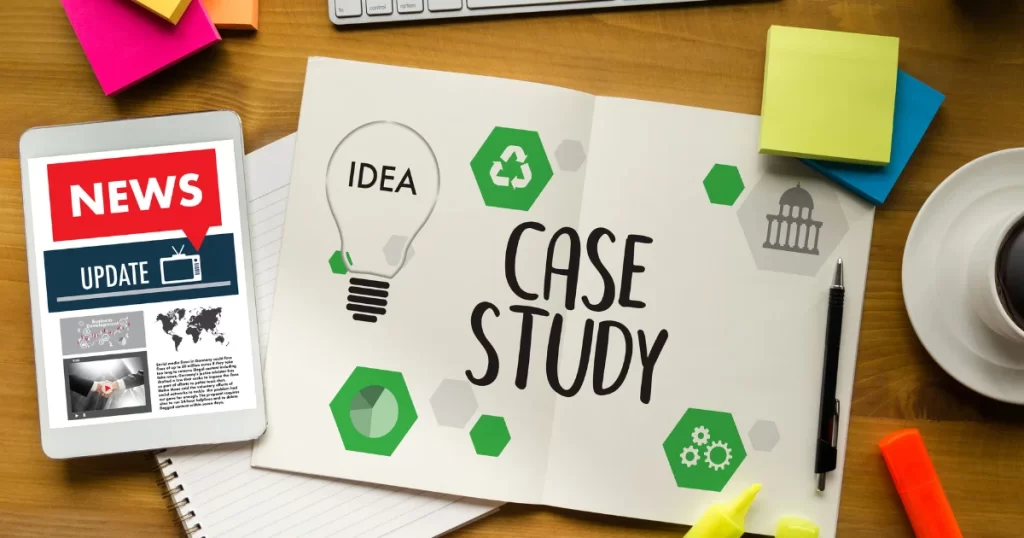
Crazy Egg, a SaaS company offering heatmap tools for website optimization, provides a stellar example of implementing a full-funnel marketing strategy. Their approach is a masterclass in leveraging each stage of the marketing funnel to guide users from awareness to loyalty.
Top of Funnel (ToFu): Awareness
Crazy Egg began by boosting brand visibility through strategic paid advertisements and SEO-driven blog content. For example, their Facebook ads targeted users interested in improving website conversion rates, while their blog posts tackled high-ranking search terms related to e-commerce and optimization. This dual strategy ensured a steady flow of traffic from both paid and organic channels.
Middle of Funnel (MoFu): Interest
Once users interacted with ads or blog posts, they were directed to Crazy Egg’s homepage. Here, visitors could enter their website URL to get a quick analysis using Crazy Egg’s heatmap tool. This interactive feature piqued user curiosity and positioned Crazy Egg as a practical solution to their challenges. The experience was further enriched by personalized email follow-ups that nurtured leads with educational content about their product’s benefits.
Bottom of Funnel (BoFu): Decision
For users ready to take action, Crazy Egg offered a seamless decision-making process. After generating interest, the company directed users to a pricing page with tiered plans, accompanied by testimonials and trust indicators. Those not ready to commit immediately were entered into a nurturing sequence, featuring emails with educational content and subtle prompts like “How can we help you?”
Post-Purchase: Loyalty
To secure repeat business, Crazy Egg focused on relationship building. They maintained customer engagement through follow-up emails offering tips, tutorials, and product updates. This post-purchase communication turned first-time buyers into loyal users who were more likely to recommend the product to others.
Results
Crazy Egg’s comprehensive funnel strategy resulted in:
- A significant increase in conversions due to targeted awareness efforts.
- Higher engagement from middle-funnel personalization.
- Repeat purchases thanks to strong post-purchase retention initiatives.
This well-rounded approach illustrates how aligning each funnel stage to specific customer needs can dramatically boost revenue and user satisfaction.
Sources:
- Single Grain: Insights on marketing funnel strategies and Crazy Egg’s implementation.
- Crazy Egg’s practices discussed by ClickFunnels and Pardot.
For more case studies, check out resources from Single Grain and Crazy Egg.
Final Thoughts: The Power of the Marketing Funnel

The marketing funnel isn’t just a fancy buzzword or a glorified diagram; it’s a proven, dynamic strategy that transforms how businesses connect with their audience. At its core, the marketing funnel is about guiding potential customers through their journey—from the first flicker of curiosity to becoming loyal advocates for your brand.
Mastering each stage of the marketing funnel requires more than generic tactics. The top of the funnel (ToFu) is where awareness reigns supreme. This is your chance to make a lasting first impression, drawing in casual browsers with engaging content or eye-catching ads. Think of it as setting the stage for a deeper relationship. Without an effective approach here, the rest of the funnel may crumble.
Moving to the middle of the marketing funnel (MoFu), the focus shifts to nurturing that initial interest. This stage is all about engagement. Through email campaigns, interactive content, or personalized recommendations, you’re not just selling; you’re building trust and a connection. A strong middle funnel ensures your audience feels seen and understood, setting the groundwork for conversions.
At the bottom of the marketing funnel (BoFu), it’s time to seal the deal. But here’s the catch: pushing for conversions isn’t just about closing a sale—it’s about ensuring the experience is smooth, enjoyable, and confidence-boosting for your customer. A poorly executed bottom funnel can undo all the work you’ve invested in the earlier stages.
Finally, the post-purchase stage of the marketing funnel often goes overlooked but holds immense value. Loyal customers are your best marketers. By creating delight through thoughtful follow-ups, loyalty programs, or surprise rewards, you turn one-time buyers into fans. These fans not only return for more but also spread the word, fueling the top of your marketing funnel all over again.
Ultimately, the marketing funnel isn’t just about sales; it’s about creating a system that generates ongoing value for your business. Whether you’re a startup or an established enterprise, optimizing your marketing funnel ensures you’re maximizing every opportunity to connect, convert, and retain your audience.
So, why stop at casual browsers when your marketing funnel can turn them into lifelong advocates? Master the art and science of the marketing funnel, and you’ll do more than increase revenue—you’ll build a brand people can’t help but love. Or at the very least, respect enough to keep engaging with. After all, the marketing funnel is not just about moving people from one stage to the next; it’s about creating an experience so compelling that your customers do your marketing for you.
If you’re ready to refine your marketing funnel, consider this your call to action: analyze, optimize, and repeat. There’s no magic wand, but with the right tweaks and tools, your marketing funnel can become a self-sustaining engine for growth.
📚💡 Extra Resources: Learn how to build a systematic marketing funnel that converts 10X more clients for 5X less effort. To begin, [Click here].

